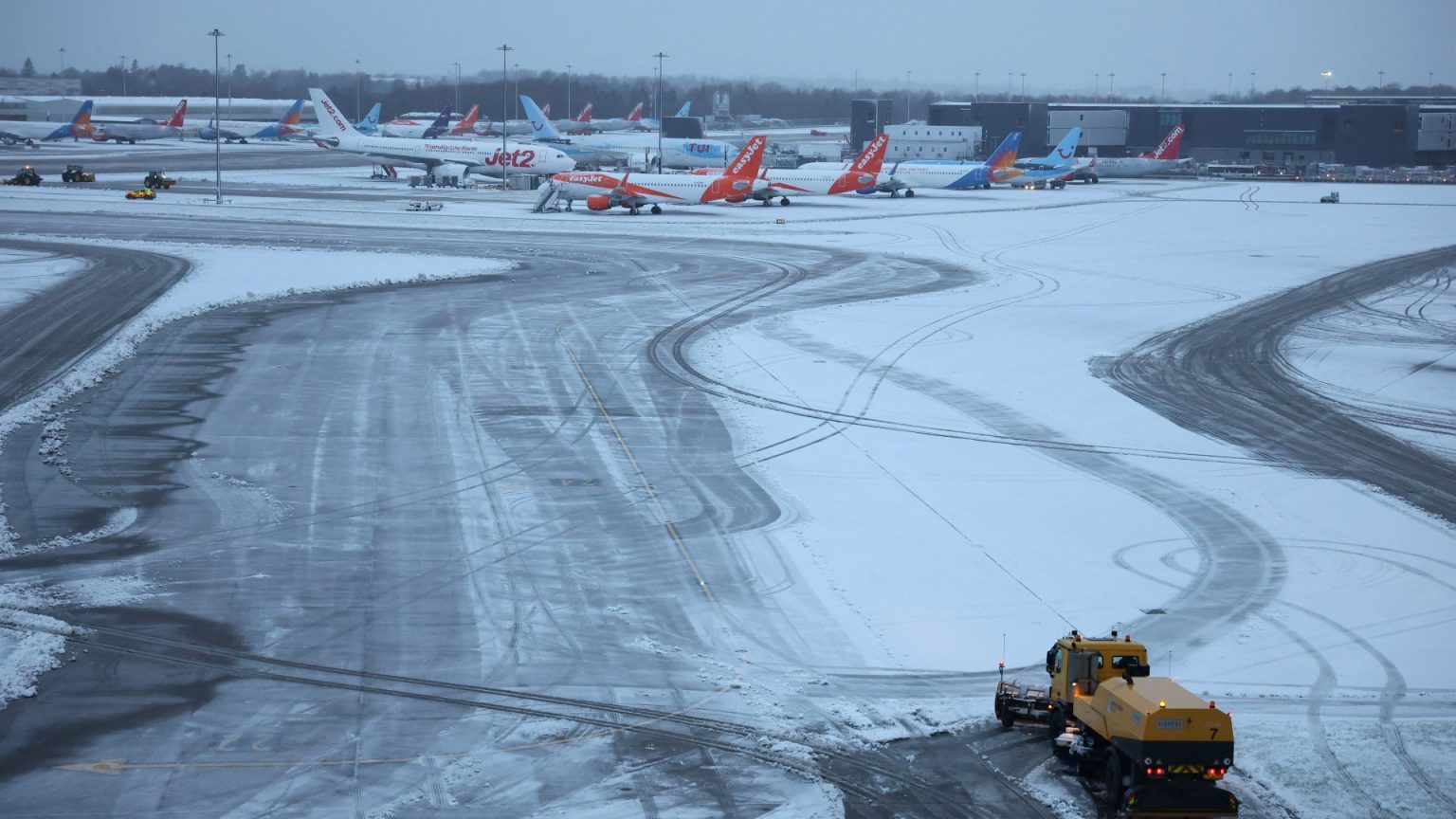The recent snowfall across the UK caused significant disruptions at several major airports, including Manchester, Liverpool, Birmingham, and Leeds Bradford, leading to flight cancellations, delays, and diversions. This disruption underscores the challenges UK airports face in managing heavy snowfall, primarily due to the nature of the snow itself and the relative infrequency of such events.
Unlike the drier, easily cleared snow common in colder climates, the UK typically experiences “wet snow,” which quickly transforms into slush and ice. This creates hazardous conditions on runways, increasing the risk of skidding and complicating snow removal efforts. While dry snow can be effectively blown or swept away, the slush and ice necessitate more intensive and time-consuming clearance procedures, impacting airport efficiency and leading to delays.
Furthermore, the infrequent occurrence of heavy snowfall in the UK means that airport staff have less experience dealing with such conditions compared to their counterparts in colder countries. This lack of regular practice can result in less efficient snow and ice management, exacerbating delays. In contrast, airports in countries with frequent snowfall, such as Finland, have highly trained personnel and streamlined procedures, allowing them to clear runways and de-ice planes within minutes.
The difference in preparedness is also reflected in the equipment available at various airports. While UK airports possess snow removal and de-icing equipment, the scale of their resources is often smaller than that of airports in colder climates. Helsinki Airport, for instance, boasts a fleet of 200 specialized vehicles and machines, significantly outnumbering the resources available at Heathrow and other UK airports. This disparity in resources contributes to the longer clearance times experienced in the UK during snow events.
To mitigate the impact of snow and ice, airports employ de-icing and anti-icing procedures. De-icing involves removing existing snow and ice from the aircraft, while anti-icing applies a protective coating to prevent further accumulation. These procedures are crucial for maintaining flight safety and operational continuity during winter weather. At Heathrow Airport, British Airways operates a dedicated de-icing area known as the “Jedi Zone.” This area facilitates the rapid de-icing of aircraft, minimizing delays. The process involves specialized vehicles equipped with cranes and spraying mechanisms to apply de-icing fluid to the aircraft surfaces. While de-icing can be performed at the gate, a dedicated facility like the Jedi Zone allows aircraft to be de-iced en route to the runway, significantly reducing turnaround times.
The challenges posed by snowfall to UK airports highlight the need for improved preparedness and infrastructure. Investing in more advanced snow removal equipment, increasing staff training for winter weather operations, and refining de-icing procedures could significantly enhance the resilience of UK airports to future snow events, minimizing disruptions and ensuring smoother travel experiences for passengers. Learning from the practices of airports in colder climates, which have developed efficient systems for managing heavy snowfall, could provide valuable insights for improving winter operations at UK airports.


